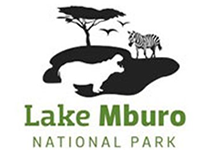Location
Situated between Masaka and Mbarara in Western Uganda, it is the only park to contain an entire lake. Beautiful and tranquil Lake Mburo National Park is situated in rolling hills and open grassy valleys. This lovely landscape also consists of four other smaller lakes where you’ll see impala, eland, waterbuck, klipspringer, zebra and buffalo.
Climate
Lake Mburo National Park lies in a rain shadow between Lake Victoria and the Rwenzori Mountains, and receives an average of only 800mm of rain a year. Being near the equator, the rainfall pattern is bimodal, with the long rains occurring from February to June, and the short rains from September to December.
The rains are rather erratic and unpredictable, but most rain tends to fall in April and November. The average recorded temperature is 27.50C with daily variation ranging from 21.50C to 34,00C. July and August are the hottest months.
Topography
The Park lies between 1,219 and 1,828 m above sea level. High hills and rocky, eroded ridges characterise the western part of the Park; here deep valleys support dry forests found nowhere else. In the eastern sector, the rolling, wooded hills are intersected by wide, flat bottomed valleys which are seasonally flooded and drain into the swamps and lakes. The Ruizi river flows in a south -easterly direction and forms part of the western boundary of the Park. Lake Mburo and its associated wetlands eventually drain into Lake Victoria.
Geology
The Park is underlain by very ancient (more than 500 million years old) Precambrian metamorphic rocks which belong to the ‘basement system’. These rocks can be seen from the Zebra Track in the Park as outcrops or “tors”. The soils in the western uplands tend to be clays and loams, while those of the eastern lowlands are sandy.
